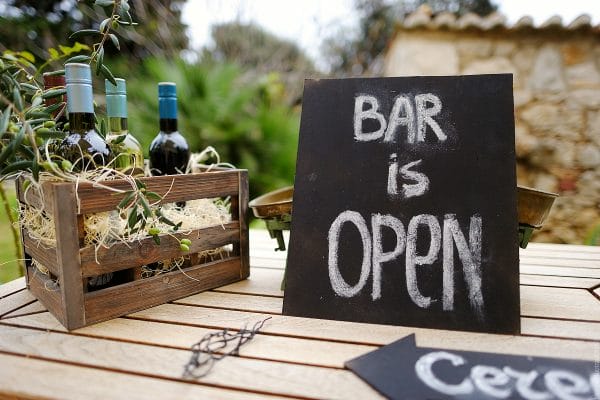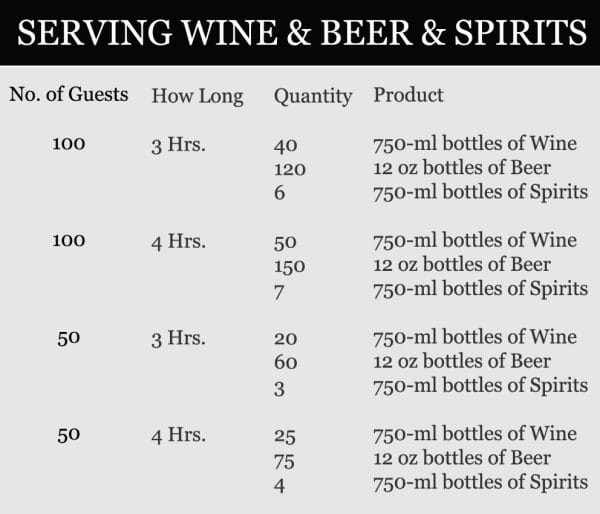
How to Save on Open Bar Costs:
Open bars are fun, but they get expensive fast. Cut down on the open bar cost by only keeping it open during certain times. For example, you could have a cocktail hour during the reception, and then switch over to just beer and wine during dinner. Or you could set up a DIY drink station where people can make their own cocktails or pour their own wine or beer. Another way to reduce open bar costs is to ask friends and family members to take turns tending bar, rather than hiring a professional.
Selecting the Right Wine:
The first rule of choosing wine is that it’s your wedding, so choose your favorite ones. Once you select a few favorites, you can choose some other varieties to match your menu.
Chicken: Choose a light to medium white wine such as an oaked chardonnay or riesling, or a light to medium red such as a zinfandel or pinot noir. A rosé is also a fine choice.
Fish: Light whites such as sauvignon blanc or riesling are ideal.Beef: Opt for a red such as a pinot noir, cabernet sauvignon, merlot or shiraz.
Pork: Serve a juicy, light-bodied red such as a grenache, pinot noir or zinfandel, or a high-acidity white such as a sauvignon blancor riesling.
Make sure you store your wine at proper temperatures. Whites and rosés should be refrigerated for a few hours prior to serving so they’re served at around 55 to 60 degrees Fahrenheit. Refrigerate reds for around 15 minutes in advance so they’re served at 60 to 65 degrees. Keep sparkling whites and champagne refrigerated beforehand, and store them on ice between pours so they stay around 45 degrees.
Selecting the Right Beer:
Your goal when choosing beer is to keep everyone happy. A good rule of thumb is to offer five or six different types of beer. Make sure you have at least two staple domestics and at least one local or craft brew for the more adventurous beer enthusiasts. You may also want to consider a seasonal option and a cider. Session beers are great for weddings, as they’re low in alcohol so they can be consumed over the course of a few hours. You may also want to have one light, hoppy beer such as an IPA or pale ale, and a darker beer such as a porter or a stout so you can cover both ends of the spectrum. Finally, you really can’t go wrong with a Belgian white. Belgian beers tend to appeal to casual sippers and beer snobs alike.
It’s no secret that planning a wedding is a daunting task. From the guest list to the menu, every detail matters, and that includes your beer and wine purchase. Fortunately setting up the perfect wedding bar is one of the easier tasks to check off your list, thank to this handy guide. Count on guests consuming two drinks in the first hour of your event and one drink during each following hour. Are you serving wine, beer and spirits? The general rule of thumb is 50% of your guests will prefer wine, 30% will prefer beer and 20% will prefer mixed drinks. Simply offering wine and beer? Plan on 60 percent of your guests drinking wine and 40% drinking beer.
Here’s your handy guide :


